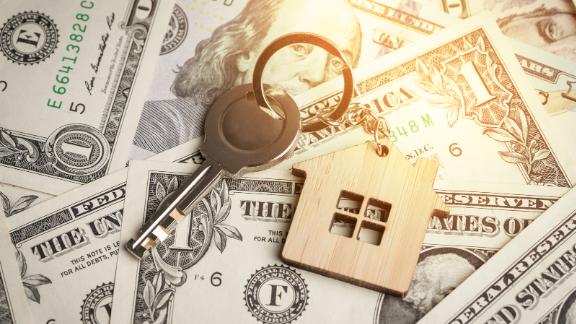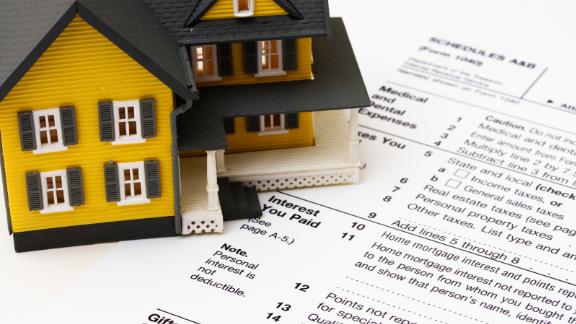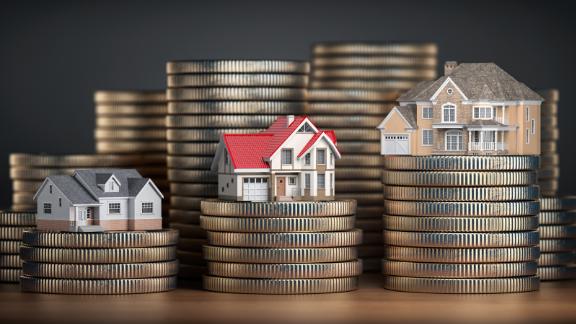(CNN) —
When purchasing or refinancing a home, one of the first major choices you’ll have to make is whether you want a 15-year mortgage or a 30-year mortgage. While both options provide a fixed monthly payment over a period of many years, there are more differences between the two than just how long it’ll take you to pay off your home.
But which one is right for you? Let’s take a look at the advantages and disadvantages of both mortgage lengths so you can determine which option best fits your budget and your overall financial goals.
The primary difference between a 15-year mortgage and a 30-year mortgage is how long each one lasts. A 15-year mortgage gives you 15 years to pay off the full amount you’re borrowing to buy your home, while a 30-year mortgage gives you twice as much time to pay off the same amount.
Both 15-year and 30-year mortgages are usually structured as fixed-rate loans, meaning you’ll lock in an interest rate at the very beginning when you get the mortgage, and you’ll keep that same interest rate for the entire time you have the loan. You’ll also typically have the same monthly payment during the entire term of the mortgage.
For reasons we’ll get into below, 15-year mortgages normally have lower interest rates than 30-year mortgages, and since you’re paying over a longer period of time with a longer mortgage, you’ll pay more in overall interest costs for a 30-year mortgage.
The 30-year mortgage is the most popular option for homeowners in the US for many reasons. But one of its main advantages is that the payments are stretched out over a period that’s twice as long as a 15-year mortgage, which means 30-year mortgages have lower monthly payments. Those lower payments make it easier to afford a home, or to buy a larger home and still stay within your budget.
According to Juan Carlos Cruz, founder of Britewater Financial Group in Brooklyn, New York, a 30-year mortgage is ideal when “the loan amount is large and amortizing it over 15 years makes the payments too much to handle, or the buyer wants more purchasing power on a greater home that they can pay off over the 30-year mortgage.”
With a lower monthly payment, you’ll have more money to spend on other household expenses, or you can even use the extra cash to turn around and make more money.

PHOTO:
iStock
You’ll have more cash available to use elsewhere with the lower monthly payment of a 30-year mortgage.
“If your money can make a 10-year annual average of 8% in the market with a diversified portfolio — minus fees of investment advisors and hidden mutual fund fees — why would you hurry and pay your 3% mortgage loan?” asks Carolyn Mescher, a CPA, and principal at Magnolia 313 Accounting Services in San Luis Obispo, California.
Invest the additional cash you’re saving with a 30-year mortgage versus a 15-year term, and “the 5% difference between the 8% you’re earning and the 3% interest you’re paying would then compound over 30 years,” explains Mescher.
Click here to compare offers from mortgage lenders by using an online loan marketplace.
More flexibility in payback terms
Cruz prefers the 30-year mortgage because it gives you the ability to speed up your payments on your own schedule.
“In my opinion, they are the best option and offer much more flexibility than shorter mortgages because you can always choose to pay off a 30-year mortgage early without having to actually commit to the 15-year mortgage,” Cruz explains.
One option is to get a 30-year mortgage that doesn’t have any prepayment penalties, then calculate what your payment would be if you had a 15-year mortgage, and start by paying that amount monthly. This will reduce the principal faster and save a lot of interest, but it leaves you a way out if money unexpectedly tightens later on down the line.
“If you do this method, you can always revert to the smaller monthly payment if you face financial hardship,” Cruz says. “You can move between the two payments without ever needing to refinance — which would also save you thousands in closing costs.”
In fact, by using this method, you can set your mortgage term to any length you want. “Just calculate your original loan amount by the terms you wish to pay on your loan’s current interest rate, and then make your normal mortgage payment,” suggests Cruz.
Or, if you don’t have enough cash to pay a higher mortgage payment every single month, you can stick with the 30-year payment plan and just make one or more additional payments each year at your convenience. This simple strategy will save you years of additional interest, and it’s easier to do when you start with a 30-year mortgage.
Larger tax deduction
When you take longer to pay down the debt on your primary residence by extending the life of your mortgage, you’ll pay more interest each year because the interest is calculated on the remaining balance of the loan.
That may sound like a bad thing — and paying more interest isn’t ideal — but there’s a silver lining. “If you itemize deductions, as many homeowners do, you get to deduct the mortgage interest you paid during the year,” says Mescher. “More interest paid equals a larger tax deduction.”

PHOTO:
iStock
Homeowners can deduct the mortgage interest for their primary residence on their taxes.
However, it’s important to remember that mortgage interest is only deductible on up to $750,000 in mortgage debt, though if you have a mortgage established prior to December 16, 2017, you can deduct interest on up to $1 million of mortgage debt.
Easier to get positive cash flow on a rental property
If you’re buying a rental property, or if you might convert your personal residence into a rental later, it’ll be easier to turn a monthly profit on the property with a longer mortgage term and a lower monthly mortgage payment.
In order to get positive monthly cash flow from a rental property, the rental income needs to exceed the property’s monthly expenses, repairs and mortgage payment, explains Mescher. “With a 30-year mortgage, the monthly payment is less, so you can achieve positive cash flow even when the rental income is lower,” she adds.
Save money with a lower monthly mortgage payment on your home with these offers.
The most obvious disadvantage of a 30-year mortgage is that it’ll take twice as long for you to own your home outright, which means a longer duration until you have financial freedom from your housing payment.
But Nicole Rueth, producing branch manager at Fairway Mortgage in Denver, also points out that the lower monthly payment of a 30-year mortgage comes at an additional cost, with 30-year mortgages carrying higher interest rates. Combined with the longer term, that results in paying much more in total interest over the life of your mortgage.
According to a recent Bankrate mortgage survey, average interest rates on a 30-year fixed-rate mortgage are currently 3.05%, which is near a record low. But in the same survey, the average rate on 15-year mortgages was just 2.45%.
That means you’re paying 0.6% more for a 30-year mortgage, which may not sound like a lot. But on a $200,000 home with a 20% down payment, you’ll pay a total of $31,358 in interest over the entire length of a 15-year mortgage at 2.45%, while the same home with a 30-year mortgage at 3.05% ends up costing a much higher $84,399 in total interest.
While the 15-year mortgage term isn’t as popular as the 30-year option, it has several major advantages for people who can afford the higher monthly payments. The biggest benefit is that instead of making a mortgage payment every month for 30 years, you’ll have the full amount paid off and be done in half the time.
Plus, because you’re paying down your mortgage more rapidly, a 15-year mortgage builds equity quicker. Equity is the value of your interest in your home, meaning the part you own outright, rather than it being subject to the lender’s mortgage.
Having more equity in your home plays to your advantage if you sell your home before your mortgage is over, or if you need to take out an additional loan on your home, such as a home equity line of credit. It’s also easier to refinance an existing mortgage if you have significant equity in your home.
You’ll likely snag a lower interest rate
Lenders adjust their mortgage rates based on the riskiness of the loan. While there are many factors they use to make this calculation, if you’re paying the principal back faster, this is typically seen as a less risky investment for the lender, and therefore you’ll be charged a lower interest rate, says Mescher.

PHOTO:
iStock
A 15-year mortgage will save you money overall versus a 30-year mortgage thanks to lower interest costs.
A shorter term also means the lender is tying up its money for a shorter length of time. Since most 15-year mortgages are at a fixed rate that doesn’t change over the entire length of the loan, the lender is taking a risk that market interest rates won’t go up significantly in the intervening years. A 15-year mortgage is less vulnerable to this dilemma than a 30-year mortgage.
Check your rates now and see offers from multiple lenders.
Pay off your home prior to passing
If you’re older and don’t expect to live 30 more years, Mescher says you should look at a shorter-term mortgage if you want to leave your home to your children free and clear of debt. A 15-year mortgage will allow you to pay off your home debt faster, and increases the…
Read More:15 year vs 30 year mortgages: Which is better?
2021-02-24 21:42:00
